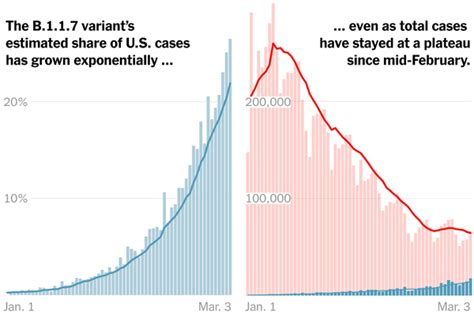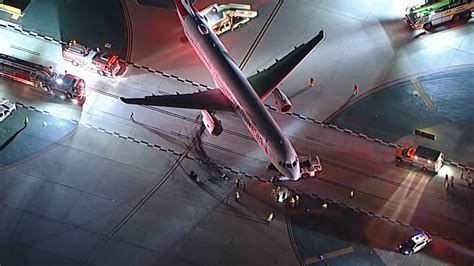
A man suffered severe injuries after being attacked by a crocodile at the Parque das Nações Indígenas in Campo Grande, Brazil, after reportedly jumping over a security fence to get closer to the animal. The incident, captured on video, serves as a stark reminder of the potential dangers of disregarding safety regulations and respecting wildlife.
A shocking video circulating online shows the moment a man was brutally attacked by a crocodile at a park in Brazil, highlighting the critical importance of adhering to safety guidelines around wild animals. The incident occurred at the Parque das Nações Indígenas in Campo Grande, Mato Grosso do Sul, where the man reportedly jumped over a security fence to approach the reptile, according to local news reports and witnesses. The man, whose name has not been officially released, sustained significant injuries to his arm and is currently receiving medical treatment. The footage of the attack has sparked widespread discussion about personal responsibility and the need for stringent safety measures in areas inhabited by dangerous wildlife. Authorities are investigating the incident, and the park administration is reviewing its safety protocols to prevent future occurrences. This event underscores the inherent risks of interacting with wild animals and emphasizes the potentially deadly consequences of ignoring established boundaries.
According to preliminary reports, the man ignored warning signs and breached a protective barrier to get closer to the crocodile. The video shows the man reaching towards the animal, at which point the crocodile lunged and seized his arm. Onlookers screamed in horror as the man struggled to free himself from the crocodile’s grip. The severity of the injuries prompted immediate medical attention, and the man was rushed to a local hospital.
“The park has clear signage indicating the presence of crocodiles and warning visitors to keep a safe distance,” a park official stated in a press conference following the incident. “We deeply regret that this individual chose to disregard these warnings, resulting in a preventable tragedy.”
The incident has reignited debates about the adequacy of safety measures in wildlife parks and the responsibility of visitors to respect established rules. Experts emphasize that while parks have a duty to protect visitors, individuals must also take personal responsibility for their actions and understand the potential dangers of interacting with wild animals.
“Crocodiles are apex predators, and their behavior can be unpredictable,” explained Dr. Mariana Silva, a herpetologist at the Universidade Federal de Mato Grosso do Sul. “Approaching them, especially in their natural habitat, is inherently dangerous. Parks implement safety measures to minimize risks, but ultimately, it is up to individuals to heed these warnings.”
The Parque das Nações Indígenas, a popular tourist destination in Campo Grande, is home to a diverse range of wildlife, including capybaras, birds, and reptiles. The presence of crocodiles in the park’s lakes and waterways is well-known, and authorities have implemented various measures to ensure visitor safety, including fencing, signage, and regular patrols by park rangers. Despite these efforts, incidents involving human-wildlife interaction occasionally occur, often due to visitors disregarding safety guidelines.
Following the attack, the park administration announced a review of its safety protocols. “We are examining all aspects of our safety measures to identify any areas for improvement,” said the park director. “This includes increasing the height of fences, adding more warning signs, and enhancing the presence of park rangers in high-risk areas.”
The incident also highlights the ethical considerations of keeping wild animals in captivity or semi-captivity. While parks play an important role in conservation and education, they also raise questions about animal welfare and the potential for human-wildlife conflict. Animal rights activists argue that animals should be allowed to live in their natural habitats without human interference.
“Wild animals should not be kept in confined spaces for human entertainment,” said Ana Paula Oliveira, president of a local animal rights organization. “This incident is a direct consequence of forcing animals to live in close proximity to humans. We need to prioritize animal welfare and promote coexistence rather than exploitation.”
The attack in Campo Grande serves as a cautionary tale for anyone visiting wildlife parks or encountering wild animals in their natural habitats. Respecting safety guidelines, maintaining a safe distance, and understanding animal behavior are crucial for preventing tragedies and ensuring the well-being of both humans and animals. The incident also underscores the importance of education and awareness in promoting responsible tourism and fostering a culture of respect for wildlife. The gruesome video of the attack has circulated widely on social media, prompting discussions about the need for stricter enforcement of safety regulations and greater public awareness of the dangers of approaching wild animals.
The specific crocodile involved in the attack has not been identified, but the park is home to several Caiman species, which are common in the Pantanal region of Brazil. Caimans are smaller than crocodiles but can still be dangerous, especially if they feel threatened or are protecting their territory. The incident serves as a reminder that all wild animals should be treated with respect and caution.
In addition to the physical injuries sustained by the man, the attack is also likely to have psychological consequences. Witnessing such a violent event can be traumatizing, and the man may experience post-traumatic stress disorder (PTSD) or other mental health issues. Support and counseling services should be made available to the man and anyone else who witnessed the attack.
The incident in Campo Grande is not an isolated case. Similar attacks have occurred in other parts of the world, often involving tourists who disregard safety warnings or attempt to interact with wild animals. In Australia, for example, crocodile attacks are relatively common in the northern parts of the country, where saltwater crocodiles inhabit coastal areas and rivers. In Africa, hippopotamus attacks are a major cause of human fatalities, as these animals are highly territorial and can be aggressive if they feel threatened.
These incidents highlight the need for a global approach to wildlife safety and conservation. Governments, park authorities, and tourism operators must work together to educate the public about the dangers of interacting with wild animals and to implement effective safety measures to prevent attacks. This includes providing clear signage, establishing safe viewing areas, and training park rangers to respond to emergencies.
Ultimately, the responsibility for safety lies with individuals. Visitors to wildlife parks and natural areas must be aware of the risks involved and take precautions to protect themselves. This includes following safety guidelines, maintaining a safe distance from animals, and avoiding any behavior that could provoke or threaten them. By respecting wildlife and adhering to safety regulations, we can minimize the risk of attacks and ensure the well-being of both humans and animals.
The local authorities are currently investigating the circumstances leading up to the attack, including whether the man was under the influence of alcohol or drugs. The investigation will also examine the park’s safety protocols to determine if any improvements can be made.
The incident has also prompted calls for stricter penalties for individuals who violate safety regulations in wildlife parks. Some argue that those who deliberately disregard warnings and put themselves and others at risk should face criminal charges.
“We need to send a clear message that reckless behavior in wildlife parks will not be tolerated,” said a local politician. “Those who violate safety regulations should be held accountable for their actions.”
The attack in Campo Grande serves as a stark reminder of the power and danger of wild animals. While these animals may seem docile or even friendly, they are still capable of inflicting serious harm. It is crucial to remember that we are visitors in their territory and that we must respect their space and their natural instincts. By doing so, we can help to prevent future tragedies and ensure the safety of both humans and animals. The incident underscores the importance of ongoing education and awareness campaigns to promote responsible tourism and foster a culture of respect for wildlife. Only through such efforts can we hope to coexist peacefully with these magnificent creatures.
The long-term consequences for the crocodile involved in the attack are also a concern. In some cases, animals that have attacked humans are euthanized out of fear that they will repeat the behavior. However, animal rights activists argue that this is unfair and that the animal should not be punished for acting on its natural instincts. The park authorities have stated that they have no plans to euthanize the crocodile but will continue to monitor its behavior.
The incident has also sparked a debate about the role of social media in spreading graphic content. While the video of the attack has raised awareness of the dangers of interacting with wild animals, it has also caused distress and trauma to those who have viewed it. Some argue that social media platforms should do more to censor or remove such content, while others maintain that it is important to show the reality of these events.
The attack in Campo Grande is a tragic reminder of the importance of respecting wildlife and adhering to safety regulations. It is a lesson that should be heeded by all who visit wildlife parks and natural areas. By taking precautions and respecting the animals, we can help to prevent future tragedies and ensure the well-being of both humans and animals. The incident serves as a call to action for governments, park authorities, tourism operators, and individuals to work together to promote responsible tourism and foster a culture of respect for wildlife.
The economic impact of the incident on the Parque das Nações Indígenas is also a potential concern. The park may experience a decline in visitor numbers as a result of the attack, which could have a negative impact on local businesses and tourism revenue. However, the park authorities are confident that they can restore public confidence by implementing enhanced safety measures and promoting responsible tourism.
The incident has also highlighted the importance of providing adequate training and resources for park rangers. Park rangers play a crucial role in protecting both visitors and animals, and they need to be equipped with the skills and knowledge to respond to emergencies. This includes training in animal behavior, first aid, and conflict resolution.
The attack in Campo Grande serves as a reminder that wildlife conservation is not just about protecting animals; it is also about protecting humans. By promoting responsible tourism and fostering a culture of respect for wildlife, we can help to create a safer and more sustainable world for all. The incident underscores the importance of ongoing research and monitoring of wildlife populations. By understanding animal behavior and habitat use, we can better manage human-wildlife interactions and prevent conflicts.
The attack in Campo Grande is a complex issue with many different facets. It raises questions about personal responsibility, safety regulations, animal welfare, social media, and economic impact. By addressing these issues in a comprehensive and thoughtful manner, we can learn from this tragedy and work towards a future where humans and animals can coexist peacefully. The incident also highlights the importance of international cooperation in wildlife conservation. Many species of animals migrate across international borders, and it is essential that countries work together to protect these animals and their habitats.
The Parque das Nações Indígenas has announced plans to launch a public awareness campaign to educate visitors about the dangers of interacting with wild animals. The campaign will include signage, brochures, and educational programs. The park is also working with local schools to educate children about wildlife conservation.
The attack in Campo Grande is a reminder that we are all part of the same ecosystem and that we have a responsibility to protect it. By respecting wildlife and adhering to safety regulations, we can help to create a more sustainable and harmonious world for all. The incident underscores the importance of promoting ethical tourism practices. Tourists should be encouraged to support businesses that are committed to protecting the environment and respecting local cultures.
The long-term effects of the attack on the crocodile population in the Parque das Nações Indígenas are still unknown. However, researchers will be monitoring the population closely to assess any potential impacts. The incident has also highlighted the importance of managing invasive species. Invasive species can disrupt ecosystems and threaten native wildlife. The park authorities are working to control invasive species in the park.
The attack in Campo Grande is a reminder that wildlife conservation is a complex and ongoing challenge. However, by working together, we can make a difference. By respecting wildlife, adhering to safety regulations, and supporting conservation efforts, we can help to protect these magnificent creatures for future generations. The incident underscores the importance of promoting sustainable development. Sustainable development aims to meet the needs of the present without compromising the ability of future generations to meet their own needs.
The Parque das Nações Indígenas is a valuable resource for both humans and animals. It is a place where people can connect with nature and learn about the importance of conservation. It is also a place where animals can live and thrive in a protected environment. By working together, we can ensure that the park remains a valuable resource for generations to come. The incident highlights the importance of community involvement in wildlife conservation. Local communities can play a vital role in protecting wildlife and their habitats.
The attack in Campo Grande is a reminder that we are all interconnected. What happens to one part of the ecosystem can have an impact on other parts of the ecosystem. By respecting wildlife and adhering to safety regulations, we can help to create a more sustainable and harmonious world for all.
Frequently Asked Questions (FAQ)
-
What exactly happened at the Parque das Nações Indígenas in Campo Grande, Brazil? A man was attacked by a crocodile after he reportedly jumped over a security fence to get closer to the animal. The incident occurred at the Parque das Nações Indígenas in Campo Grande, Mato Grosso do Sul. The man sustained serious injuries to his arm and is currently receiving medical treatment. The incident was captured on video and has circulated widely online.
-
What safety measures were in place at the park, and why weren’t they effective? The park has “clear signage indicating the presence of crocodiles and warning visitors to keep a safe distance,” according to a park official. Fencing and regular patrols by park rangers are also in place. However, the effectiveness of these measures was undermined by the man’s decision to disregard the warnings and breach the protective barrier. It is crucial to remember that “it is up to individuals to heed these warnings,” as Dr. Mariana Silva explained.
-
What kind of crocodile was involved, and what are the potential consequences for the animal? The specific crocodile involved has not been identified, but the park is home to several Caiman species, which are common in the Pantanal region of Brazil. While authorities have stated they do not plan to euthanize the crocodile, “animal rights activists argue that this is unfair and that the animal should not be punished for acting on its natural instincts.” The park will continue to monitor the crocodile’s behavior.
-
What is the park doing to prevent similar incidents from happening in the future? The park administration has announced a review of its safety protocols, including increasing the height of fences, adding more warning signs, and enhancing the presence of park rangers in high-risk areas. The park also plans to launch a public awareness campaign to educate visitors about the dangers of interacting with wild animals.
-
What can visitors to wildlife parks do to ensure their safety and the safety of the animals? Visitors should always respect safety guidelines, maintain a safe distance from animals, and avoid any behavior that could provoke or threaten them. This includes following posted warnings, staying behind designated barriers, and refraining from feeding or approaching animals. “By respecting wildlife and adhering to safety regulations, we can minimize the risk of attacks and ensure the well-being of both humans and animals.” It’s important to remember that “we are visitors in their territory and that we must respect their space and their natural instincts.”









